Ever wonder what is Googlebot and how it works? Googlebot is a web crawler developed by Google Inc. The bot is designed to crawl websites and index their contents.
Googlebot helps improve the core algorithm and create new features to serve its users better. For example, the bot also indexes them in addition to crawling sites. So when a user types a query into the Google Search Console box, they get relevant pages from the site indexed. This article discusses what is Googlebot and how you can optimize your website for Googlebot.
What Is Googlebot?
Googlebot is the general term of Google’s web crawler, which includes two types of crawlers: Googlebot Desktop, its desktop crawler, and GoogleBot Smartphone, the mobile version bot. These crawler types obey the same product token in robots.txt, so we can’t use robots.txt to target them separately. We can, however, use meta tags to do this.
Mobile-first Indexing is prioritized so mobile-first sites will get more traffic than non-mobile-first sites. However, if you have many indexed pages, but most of them aren’t being accessed via mobile devices, then you’re losing out on potential revenue. So you need to make sure that your website is accessible via mobile devices.
Googlebot crawls and indexes web pages. Google uses it to crawl and index pages on the internet. It helps Google understand the content of pages and provides information about them to users. This information helps Google provide better results when people type queries into Google Search Engine.
Googlebot is a robot that crawls the internet, searching for new things to add to its database. It follows incoming links from one page to another and collects information about each page. It also makes sure that every link is working properly. It is used by a popular search engine Google to rank websites.
Links are important because it allows Googlebot to go from webpage to webpage. Images, navigation bars, anchors, and even javascript can also navigate. Pages with good structure, fast loading times, and clear text are easy for Googlebot crawl. This helps your website get more visitors.
Each link contains a keyword that helps the searcher find what they are looking for. Using keywords, the programs that run these searches know what the searchers are looking for.
How Does Googlebot Work?
Googlebot looks for new external links on your website. When it finds new links, it provides quality updates to its database. The bot also checks if there are any broken incoming links. Googlebot doesn’t know when it should crawl your page. You can tell it to crawl more frequently by checking the crawlability.
What Happens after Google Discovers a Page?
After a page is found, Google tries to understand the page’s topic. This process is called Indexing. Then, Google analyzes the content of the page and catalogs images and videos embedded on the page.
Google also understands some images and video, but not nearly as well as the text. It would help if you used page headings that convey page topics and used text instead of images to convey content. In addition, you may want to add annotations to video images with alt text.
Googlebot should visit your site within a few seconds on average for most sites. To reduce the load on your server, Google runs many crawlers on machines close to the sites that they might index. This means that your logs may show visits by several machines at google.co.uk, all using the Googlebot user agent string.
Google wants to ensure that it can get enough data about your website from the crawling process, but it also doesn’t want to avoid causing too much load on your servers. So if you’re experiencing problems getting enough data, you can ask Google to slow down its crawl rate.
Starting November 2020, Googlebot might crawl your site over HTTP 2 if it supports it. Otherwise, it would run on HTTP/1.1. It does not affect Indexing or ranking your site. You can opt-out from crawling over http/2 by responding with a 421 HTTP status.
What Happens after Indexing
Google ranks web pages according to its advanced algorithms, including factors such as page content, internal links, and keywords. It also looks at whether you created the webpage before or after entering the search term. Pages that you created recently get better rankings than older ones. This helps the Google search console understand what information people are searching for.
To ensure you get the top result, use a path of links from authoritative sources on your website. In addition, you should include fresh content that’s informative and useful. You can achieve this by including valuable information on your web page.
Here’s How You Can Improve Your Website Ranking:
- Improve page speed
- Make your website mobile-friendly
- Add useful, relevant content type
- Keep your content updated
- Follow Google Webmaster Guidelines
How to Know If Google Has Visited Your Site
To know what Googlebot visits your website, you can check your web server logs or the Google search console. However, to see how crawling works, you need to understand search engine optimization log file analysis.
Google doesn’t crawl every single page on your site. As a result, some pages may take longer than others. For example, if you change a lot of content on a page, it might take longer for Google to index it. To ensure that the Google search console notices changes to your site, you must let them know about these changes.
Robots.txt blocks pages from crawled, but their links may still be indexed. This means that Google can see what you’re hiding from search engines, but it can’t get inside your house. It would help if you used robots.txt to protect pages that you don’t want to appear in organic search results.
Here are some ways to disallow Googlebot from indexing your website:
- Robots don’t need to be told what to do. Using “nofollow” in the robots meta tag means robots should see that internal linking as normal but not interested in following them.
- You can use the ‘nofollow’ attribute for individual links to ensure that Googlebot doesn’t follow those types of links. That means search engines won’t see them as part of your site’s structure or content, but you’ll be better off for it.
What Are Canonical URLs?
The worldwide web has become a huge database of information. Millions of new documents are created every day, and billions of people access these documents via their computers or mobile phones. As a result, different URLs can be created to arrive at the same page. It’s also possible that there are little variations of the page, depending on the type of device used to access the URL.
In this case, we should say that there are two possible URLs for documents that Google finds. This is because one of them is used more frequently than the others. As a result, we can say that there are two different URLs that Google uses for each document.
Google chooses one of the URLs to be the canonical URL. This is the URL that Google would most likely crawl more. The other one would be considered a duplicate. Therefore, you need to indicate the canonical URL, which isn’t explicitly. Otherwise, Google will choose for you or, in some cases, weighs both URLs as the same. This could lead to penalties that could affect your ranking.
How to Boost Your Technical SEO
Add robots.txt
Web admins use robots.txt files to control what pages Google bot should or shouldn’t crawl. This is done to prevent spamming and other malicious activity. Therefore, it’s highly recommended that you create a robots.txt file type and include a link to a sitemap.xml file type.
Optimize Your Sitemaps
Sitemaps are a key way for Googlebot to find your website. You should only have one sitemap. Make sure you separate your blog posts and other pages into different sitemaps. Also, remove any old, broken, or dead links from your site. Finally, submit your sitemap. XML file to Google Search Console. Monitor the results.
Eliminate duplicate webpages
Duplicate content should be avoided. This is because search engines see these duplicates as spammy and penalize you for having them. You could also lose rankings if your site gets penalized by Google or another search engine for having too much duplicate content.
Clean URL
Having a clean and defined URL hierarchy helps Google crawl more efficiently, but if you’re already ranking well, don’t worry about cleaning up your URLs. You’ll lose out on traffic by doing this.
JavaScript Rendering
Dynamic content such as videos, images, or other media files may be difficult to index and crawl. This makes it harder for organic search engines to understand what content to show to users. While it’s important to use JavaScript for certain types of dynamic content, such as video players, there are also many cases when using server-side dynamic rendering is better.
Optimize Your Images
Images are non-text content that should be named well and include useful information. Alt tags should describe the image and provide additional context. Structured data describes the image on the page. Image sitemap shows how the popular search engine Google crawls the images on the page when the anonymous user searches for keywords related to the image.
Clean Broken Links
We should remove all broken links as soon as possible. Broken links are never good, but they won’t cost you anything. First, you should check your server logs to see if any errors occurred while creating the redirect. If you notice a server error, try to fix it before removing the link. The best action to take is to replace the original links on each page with the last link. This prevents the redirect loop.
Be Careful of Redirect Chains
Redirecting pages is a bad idea because it makes it harder for search engines to start the indexing process for your website. Redirecting pages also means users won’t see any useful content. So make sure you only redirect pages when necessary.
Optimize Your Title Meta Description
Ensure the meta description fits within the 150-160 characters Google allows. If that doesn’t do it, work on your body content.
To End
Googlebot may be a small robot, but it packs a punch. It has the greatest impact on your website when it comes to practices for SEO. Are you having issues with your SEO campaign? ITD Web Design has SEO professionals that can help you with your online campaigns.







Leave A Comment